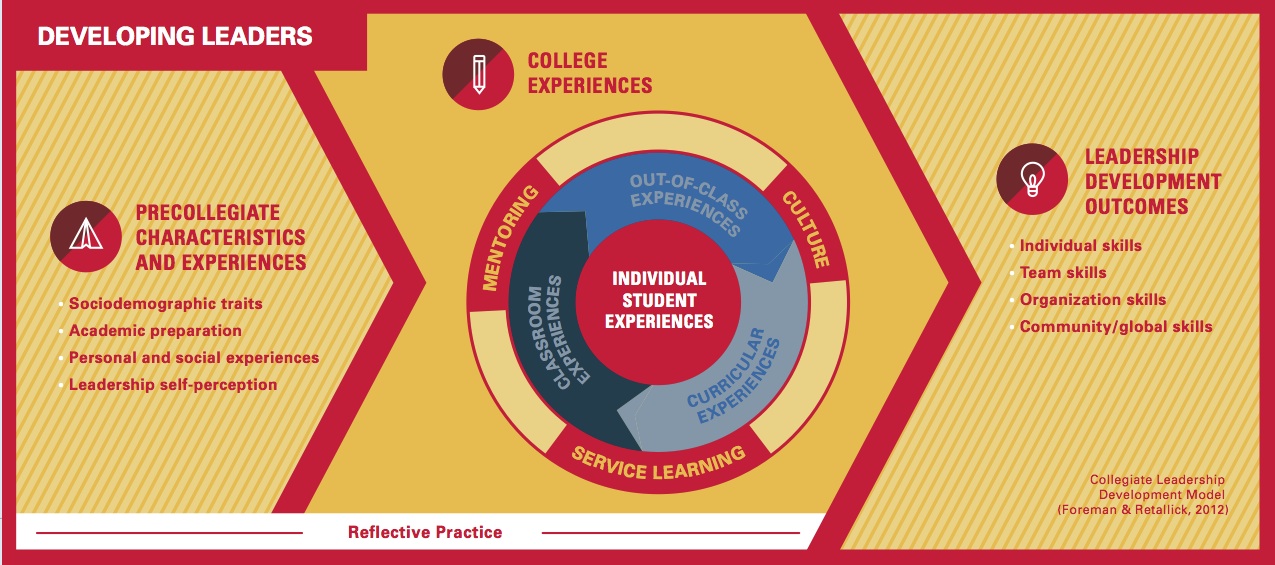
Developing Leaders; A Model of Leadership
College of Agriculture and Life Sciences students are known among recruiters for their involvement and leadership in extracurricular activities.
“Our employers say CALS students have great leadership skills. We’re trying to understand what those skills are and what activities are most likely to influence those skills,” says Beth Foreman, program coordinator in CALS Student Services.
Our alumni often say their out-of- classroom involvement was so important when they were students here. It’s nice that we have data to confirm the impact of those experiences on our students.
-Beth Foreman
For her doctoral research, she sought to identify and describe experiences of undergraduate extracurricular involvement that result in increased leadership development. Foreman, (’12 PhD agricultural education’) continued her research within the college, most recently studying the impact of high school leadership experiences and collegiate leadership involvement on leadership development. She collaborated with Mike Retallick, associate professor agricultural education and studies.
Leadership skills were defined in the study as the influential relationship among leaders and followers to make change or meet shared objectives. Leadership skills were measured in four different areas: individual skills, team skills, organization skills and community/global skills.
The online survey of CALS seniors showed an impressive amount of involvement among the college’s students with 96 percent in an extracurricular activity, specifically:
- 95 percent in clubs and organizations
- 29 percent in competitive teams, such as judging teams
- 21 percent in the Greek system
“We found the extracurricular involvement they had as high schoolers was also relevant in predicting leadership skills,” she says.
CALS students were involved in a wide variety of extracurricular activities in high school, and more than 60 percent served as an officer. Involvement consisted of:
- 77 percent in athletics
- 69 percent in student government
- 53 percent in national honor society
- 49 percent in music
- 45 percent in FFA
- 41 percent in 4-H
“Based on our research we can tell students if they want to be a good leader when they graduate from college, they should be involved in extracurricular activities,” Foreman says.
Some students reported participating in more than 10 clubs or activities. Results showed optimum involvement was between three to four clubs. Nearly three-quarters served as officers, and the students spent an average of five hours a week on extracurricular activities.
“Student leadership development increases dramatically with participation in up to three to four clubs, but after that it goes down just as dramatically as it went up. Once people got that involved the quality of those experiences went down,” Foreman says.
Reflection is important in helping students make meaning of their experi- ences and apply what they learned to future experiences. Foreman says this can be accomplished in a variety of ways, such as journaling and group discussion.
The research is helping CALS recruit students, Foreman says. Using information about prospective students’ high school involvement will help CALS recruiters suggest the type and number of opportunities on campus.



